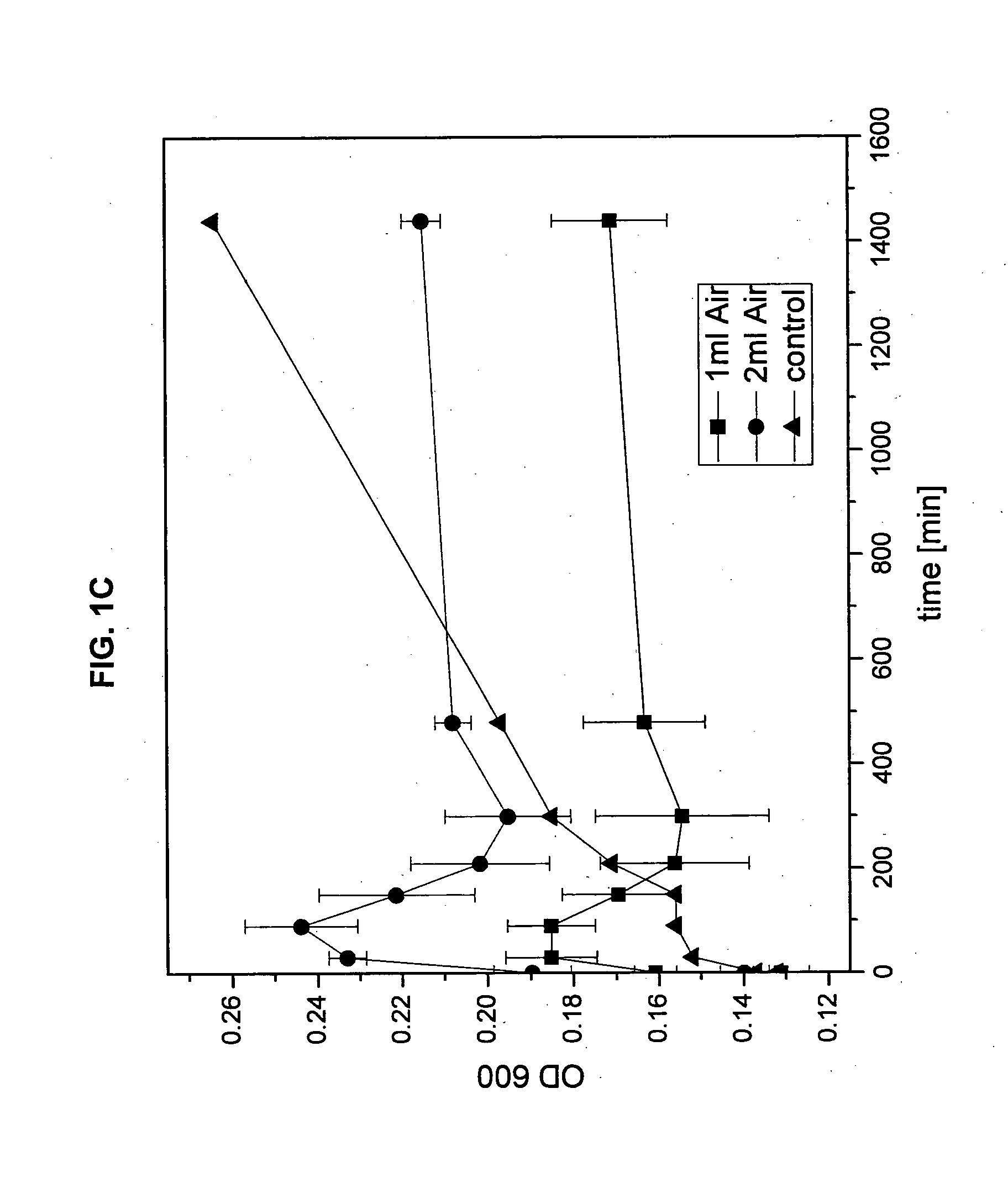Phage ømru polynucleotides and polypeptides and uses thereof
a technology of phage mru and polypeptides, which is applied in the direction of antibody mimetics/scaffolds, depsipeptides, fusion polypeptides, etc., can solve the problems of requiring the government to purchase carbon credits, currently estimated to cost $350 million, and loss of 8-12% of the gross energy produced in the rumen
- Summary
- Abstract
- Description
- Claims
- Application Information
AI Technical Summary
Benefits of technology
Problems solved by technology
Method used
Image
Examples
example 1
Genome Size Estimation
[0153]Methanobrevibacter ruminantium strain M1T (DSM1093) was grown on BY+ medium (basal medium, Joblin et al., 1990) which consists of [g / l] NaCl (1), KH2PO4 (0.5), (NH4)2SO4 (0.25), CaCL2.2H2O (0.13), MgSO4.7H2O (0.2), K2HPO4 (1), clarified rumen fluid (300 ml), dH2O (360 ml), NaHCO3 (5), resazurin (0.2 ml), L-cysteine-HCl (0.5), yeast extract (2), and Balch's trace elements solution (10 ml) (added trace elements; Balch et al., 1979) which consists of (g / l) nitrilotriacetic acid (1.5), MgSO4.7H2O (3), MnSO4.H2O (0.5), NaCl (1), FeSO4.7H2O (0.1), CoCl2.6H2O (0.1), CaCl2 (0.1), ZnSO4.7H2O (0.1), CuSO4.5H2O (0.01), AlK(SO4)2.12H2O (0.01), H3BO3 (0.01), Na2MoO4.2H2O (0.01), NiSO4.6H2O (0.03), Na2SeO3 (0.02), and Na2Wo4.2H2O (0.02). Genomic DNA was extracted by freezing cell pellets in liquid N2 and grinding using a pre-chilled, sterilised mortar and pestle. Cell homogenates were imbedded in agarose plugs and subsequent manipulations were carried out in the plugs ...
example 2
[0154]The DNA of the M. ruminantium genome was sequenced by Agencourt Biosciences Corporation (Massachusetts, USA) using a random shotgun cloning approach (Fleischmann et al., 1995) and by Macrogen Corporation (Rockville, Md., USA) using pyrosequencing. Briefly, libraries of M. ruminantium DNA were constructed in Escherichia coli by random physical disruption of genomic DNA and separation of fragments by gel electrophoresis. Large fragments in the 40 Kb range were retrieved from the gel and used to generate a large insert fosmid library. DNA fragments in the 2 to 4 Kb range were recovered and used to generate a small insert plasmid library. Clones resulting from both large and small insert libraries were grown, and their fosmid or plasmid DNA was recovered and sequenced using high throughput sequencing technology. A sufficient number of clones were sequenced to give a theoretical 8 fold coverage of the M. ruminantium genome. Pyrosequencing was performed on ...
example 3
Sequence Assembly and Prophage Annotation
[0155]DNA sequences were aligned to find sequence overlaps and assembled into contiguous (contig) sequences using Paracel Genome Assembler (Paracel Inc, CA, USA) and the Staden package (Staden et al., 1998) in combination with sequence from both standard and inverse PCRs. Contigs were analysed using the open reading frame (ORF) finder GLIMMER (gene Locator Interpolated Markov Model ER, Delcher et al., 1999) and each ORF was analysed by gapped BLASTP (Basic Local Alignment Search Tool (Altschul et al., 1997) against the National Center for Biotechnology Information (NCBI) non-redundant nucleotide and protein databases. The contigs from the 8 fold draft phase sequence were joined at random by artificial linking of sequences to generate a “pseudomolecule” and submitted to The Institute for Genomic Research (TIGR, DC, USA) for autoannotation. The contigs assembled from the 10 fold pyrosequencing were reanalysed using GLIMMER and ORFs were autoann...
PUM
| Property | Measurement | Unit |
|---|---|---|
| melting temperature | aaaaa | aaaaa |
| temperature | aaaaa | aaaaa |
| reaction volume | aaaaa | aaaaa |
Abstract
Description
Claims
Application Information
 Login to View More
Login to View More - R&D Engineer
- R&D Manager
- IP Professional
- Industry Leading Data Capabilities
- Powerful AI technology
- Patent DNA Extraction
Browse by: Latest US Patents, China's latest patents, Technical Efficacy Thesaurus, Application Domain, Technology Topic, Popular Technical Reports.
© 2024 PatSnap. All rights reserved.Legal|Privacy policy|Modern Slavery Act Transparency Statement|Sitemap|About US| Contact US: help@patsnap.com










